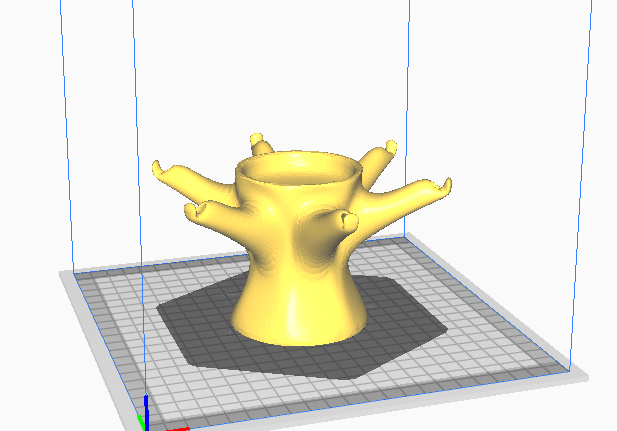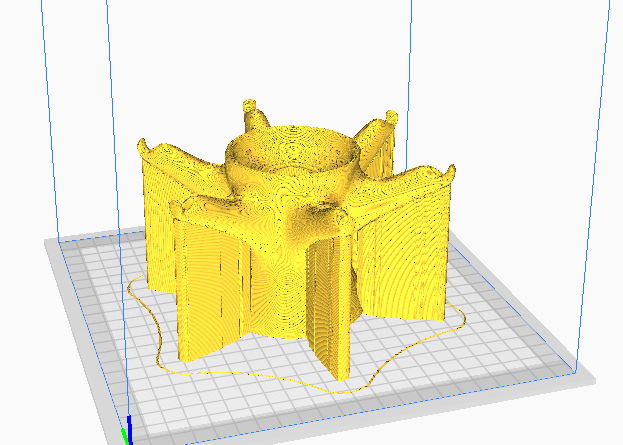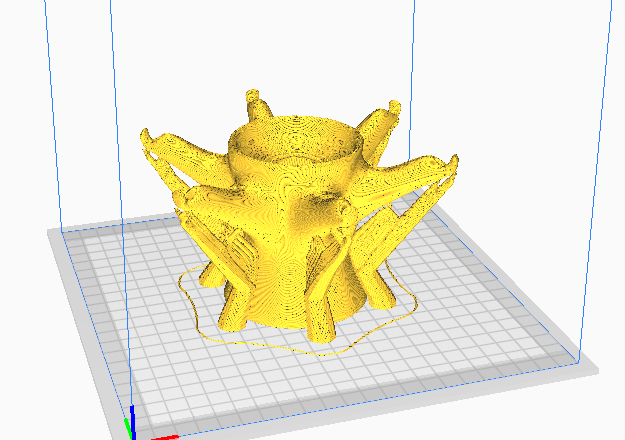AMPEL: November Update
The last two months since the writing of the AMPEL September Update have been productive from many standpoints. Product design has grown as new softwares and techniques have been brought into the knowledge base. Production continues to be perfected through testing of diverse materials and machinery. Connecting with other professionals in the industry continues to provide key personal connections as well as expert knowledge and influence. We have explored physical office space and may move into a location as soon as the end of the year. Finally, thanks to partnership with Granté Productions, media has been incorporated which has the potential to share our work with the world. The importance of this area of media is extremely valuable and will be a staple of all operations.
Product Design and Print Operations
During the last period we invested a significant amount of time in software organization and capabilities. In-house design is a significant form of revenue. Although we make heavy use of web communities to download and refine models, the majority of design work is done in-house. Print preparation through slicer software improved. Post-processing saw tremendous improvement through streamlined documentation and a variety of new methods.
Design Software
Autodesk Fusion 360 continues to be the main program used for in-house design. This program is vast and we estimate that AMPEL currently utilizes only about 40% of its potential. With this in mind, time is spent each week learning more functionalities through study, practice, and documentation.
In experimenting with other programs, IronCAD was downloaded and is in the process of integration. I imagine that this will be used more as laser sintering printers are incorporated. One strength of this program is its ability o create professional drawings from digital models quickly and easily.
OpenSCAD continues to be a program used to teach logic, mathematics, and spatial recognition. Unfortunately it is not at all efficient or practical for designing models for production due to its code-based nature. As a learning tool it is fantastic and I encourage all young designers to learn its elements.
SolidWorks has been added to the virtual tool belt. This program is the industry standard for product design, so understanding its elements of design as well as compatible file formats is key. SolidWorks certification is a target on the horizon and will be pursued.
Though not in use anymore, xyzCAD should be mentioned as it is a good program for beginners to learn spatial recognition and interfaced modeling (rather than code-based modeling). This program is also linked to xyzPrint which is the only program which links to the daVinci Mini 3D Printer, an older piece of equipment.
Internet Communities
Thingiverse and Thangs are the two websites most used for downloading models from the community. Reddit and Github are utilized for soliciting input and feedback from the additive manufacturing community and for gaining inspiration in general. The input of the community is never disregarded and almost constantly sought out. These internet communities are a key part of staying up to date on technological developments in the AM world. Twitter is also a lifeline to the additive manufacturing community and is used for information gathering.
Preparation Software (Slicer)
Print preparation through the slicer software Ultimaker Cura improved by integrating more functionalities. (This type of preparation program is referred to as a “slicer” as it “slices” a 3D model ino 2D planes to prepare for 3D printing).
Cura has dozens of detailed options to prepare models for printing. By learning more of these, print capabilities have improved by integrating custom supports and manipulation of temperatures and speeds. I am wary of over-integration, where resources are wasted trying to use as many functions as possible even though their marginal utility is minimal.
PrusaSlicer has also been downloaded and will be integrated for use. This program is designed by the team at Prusa printers, a notorious and pioneering organization in the world of 3D Printing. This program offers many of the same functionalities as Ultimaker Cura.
Post-processing
For post-processing, more tools were purchased to assist in cutting away supports. This has proven very helpful and much better on my hands. Further, version 1 of the after-action report has been created and is easily reproducible. This provides insight for modifying designs and facilitates an internal feedback loop which amplifies improvements.
Research and Development
According to the organization’s name, an objective is to experiment with new types of materials and log their usage.
Materials
Since inception, AMPEL used ABS (acrylonitrile butadiene styrene) as the primary material; this has changed. This period saw the incorporation of PLA (polylactic acid) into operations instead. This material varies in application from ABS in ways which are discussed in detail later but, overall, PLA has proven to be more reliable in print operations and in usage following the print. Further, ABS, when melted and re-solidified, emits fumes which are not ideal for human lungs. Until more production space is acquired which boast proper ventilation, ABS will not be used. We currently have on hand approximately 6kg of ABS, 1.5kg of PLA, and 2kg of specialty filament.
Machinery
In this period our primary piece of equipment, the Creality Ender 3 printer, was dissected and reassembled with critical repetitive motion parts replaced. This tune-up was necessary for a couple reasons: 1) the machine had accumulated approximately 800 hours of print time and 2) afforded us further insight into the construction and necessary parts of the 3D printer. This knowledge is like gold.
Further experimentation has been run in the area of print speed. This is constrained by the composition of the material in use, ambient temperature, and temperature of the hot end. These are all factors determining the speed at which fluid material reaches its plasticity level and hardens. With the industry norm rate of deposition at 50 mm/second, successful tests have been run up to 55 mm/s with PLA and at 60 mm/s with ABS. Experiments will continue to test these factors and keep pushing the print speed higher and higher while maintaining product quality.
Hardware was tested in the form of nozzle size of the hot end. The default of printers used (daVinci Mini and Creality Ender 3) is a nozzle with diameter of 0.4mm. Now integrated is a nozzle with a diameter of 0.2mm which allows for much finer detail, the implications of which are discussed here. It should be noted that interchanging the two nozzles is time and energy consuming; a preferable alternative would be purchase a second machine in which case one is permanently fitted with a 0.4mm nozzle and the other with a 0.2mm nozzle (and so on as the company continues to scale and needs arise).
Default settings within both Ultimaker Cura and PrusaSlicer generate support structures as a solid block from the base plate to the suspended portions of the model, or between face of the model and higher edge. Experimentation has been performed with “tree” supports. These are specifically generated by the slicer software to the model at hand and, as the name implies, resemble tree roots. Tree supports are relatively simple to remove as they are only one layer wide. This has improved the post-processing method.
The image set below demonstrates the difference between “normal” supports and “tree” supports. The first image shows the model before supports have been generated; the second image shows the model with normal supports; the final image shows the model with tree supports.
Use of tree supports generally requires less material. Use of tree supports generally decreases the time to print because of the difference in amount of material used. Tree supports are generally easier to remove and make post-processing much more simple.
Business Development
As the organization grows around the idea of additive manufacturing as a dominant, data-driven industrial technology, expansion is not only desirable but necessary. The pace of change only quickens, and if we are not accelerating also then we will be left behind. I admit that many ideas about AM innovation which have been dwelt upon have turned up in research the same week, already implemented by another research group. This turns out to be fantastic as I can study their research and better influence my own studies. Below are a few areas of business development which we plan to do over the next quarter.
Resin Printing
Current 3D printing operations utilize Fused Deposition Modeling as the additive manufacturing application of creation. Though this a fantastic method, AMPEL needs to keep experimenting with diverse methods of the technology. The next area which I’d like to move into is Sterolithography, which uses an ultraviolet laser to cure a photopolymer resin into a solid structure.
This difference in methodology, technology, and materials draws my curiosity and my studies have shows that this method of production better meets professional standards than does fused deposition modeling. It is on a professional tangent as well as an adherence to the AMPEL mission that I must pursue this pivot.
Office Space
As assets grow and equipment gathers, the small space in which AMPEL currently operates in is just that: small. Though a global pandemic rages, this need for space hangs heavy as failure to find sufficient operating space could stall operations and damage the organization. A few suitable locations have been found and we are in the process of acquiring financing to enable us to move in.
Media
As mentioned above, operational media will be vital to growth. Following the example of Walt Disney, the ability to share creative endeavors and projects bids the insight of the community and, bluntly, demonstrates to the audience that you are doing something productive. This is discussed in the piece on Operational Media, which emphasizes how the feedback loop between the creative and the community has so much potential for value on both ends. The hard part is creating the media which initiates the loop; after that, everything else becomes easy.
Developing a media team around my operations is difficult but is starting to come together. Finding other creatives with drive and passion is a mission in and of itself; persuading them to work with me becomes an adventure.
Projects are now visible on The Blog’s Projects page.
Conclusion
Thanks to the small group of investors and supporters, AMPEL has turned from an abstract idea into a semi-operational reality. Guiding the vision is slow and ever-changing work, mostly research. Developing hardware and software to fulfill the vision is exciting work which I am thankful for and will continue to do even when resources have run dry.
Update 11.28.20 - Fusion 360 is awesome but it’s apparent that Solidworks has significant ownership of market share in preferability. I ought to learn more about the testing and simulation modules in both in order to take most advantage. I should also start teaching these as well.
A question from yesterday’s meditation is “what’s more valuable… your projects or your students?” This was a good meditation because I really must invest into both. A student should always be along for a project.


